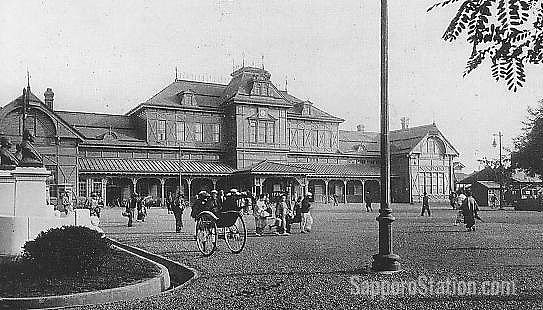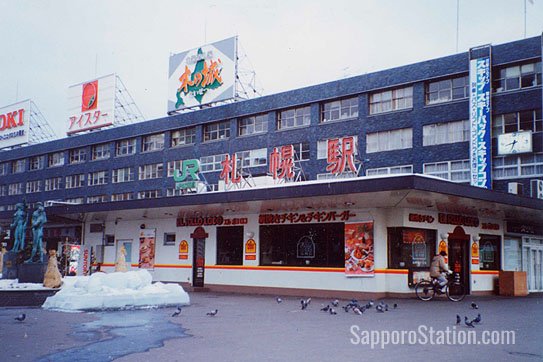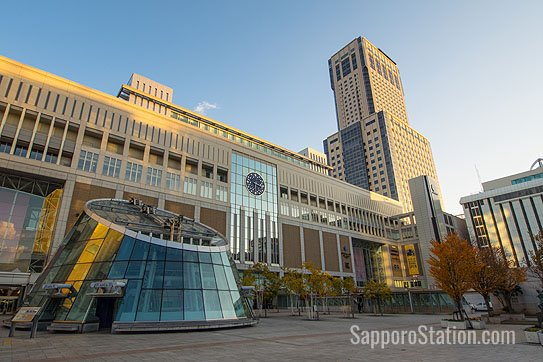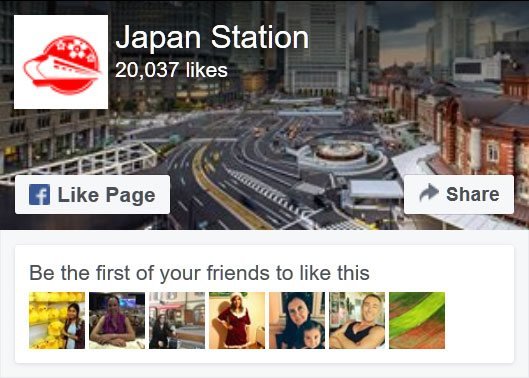Sapporo Station had humble beginnings, as a whistle-stop station on a local railway that connected Hokkaido coal mines with a regional shipping port. But like Sapporo City itself, it steadily grew into Hokkaido’s transport and commercial hub.
Before 1868, Sapporo as a settlement was merely a spot on a plain less swampy or mountainous than the rest of Hokkaido. After that it began to grow, thanks to the provisional colonizing agency moving government buildings north from Hakodate to centralize Hokkaido’s defense and development. Foreign experts were also brought in to develop the prefecture’s agricultural economy, and with them engineers to lay out Sapporo on a grid (very unusual in Japanese cities).

Sapporo Station in Taisho era (1912-1926)
However, it took a while longer for public transportation to become a priority. By 1880, Sapporo had grown from a village to a “ward”, yet Sapporo “station” itself was merely a convenient “flag stop” (as in, passengers flagged down a passing train if they wanted to board) on the Horonai Railway, en route to transporting coal from inland mines to portside in Temiya (now Otaru). The first Sapporo Station building was constructed a year later, and then reconstructed into a multi-roomed structure in 1908 after being heavily damaged by a fire. Further improvements to its infrastructure and services followed in 1909, 1917, and 1930, adding places to eat as well as to wait.
By 1952, Sapporo Station had been transformed from a wooden to a concrete structure, and included its first local department store. By 1958, a second train line was added. By the 1960s, it had become a multistory structure surrounded by Sapporo’s budding financial district. By the 1970s, Sapporo Station was feeling the benefits of Hokkaido’s developing tourist economy, as air traffic volume between Sapporo Chitose and Tokyo Haneda Airports was on its way to becoming the world’s largest. Sapporo’s once-centralized downtown began to develop a dumbbell shape, split between the major department stores by Odori Park and the rival merchants setting up shop four blocks away within and underneath Sapporo Station.

Sapporo Station building in 1990s (source Wikimedia:Yasu)
By 1988, Sapporo Station had expanded to 11 lines and opened elevated tracks. By 2003, it had completely revamped itself into a skyline-dominating multistory complex (including the JR Tower Hotel), surrounded by high-rise competitor hotels and office buildings, with floor after floor of shopping areas and food emporiums. In 2016, when the Hokkaido Shinkansen begins operation as far as Hakodate (eventually reaching Sapporo some years from now), it will be interesting to see how Sapporo Station will once again change to accommodate the influx.

Sapporo Station today
JR Sapporo Station has become the one place that visitors to Sapporo could not (and should not) avoid. Not only because it is the transportation hub of the city and beyond, but also because it is a great place to walk around, shop, and explore. You will feel that you are in a major metropolitan area, with facilities on a scale commensurate with Japan’s fifth-largest city—and growing. Come see it for yourself.
Article by Dr. Debito Arudou
